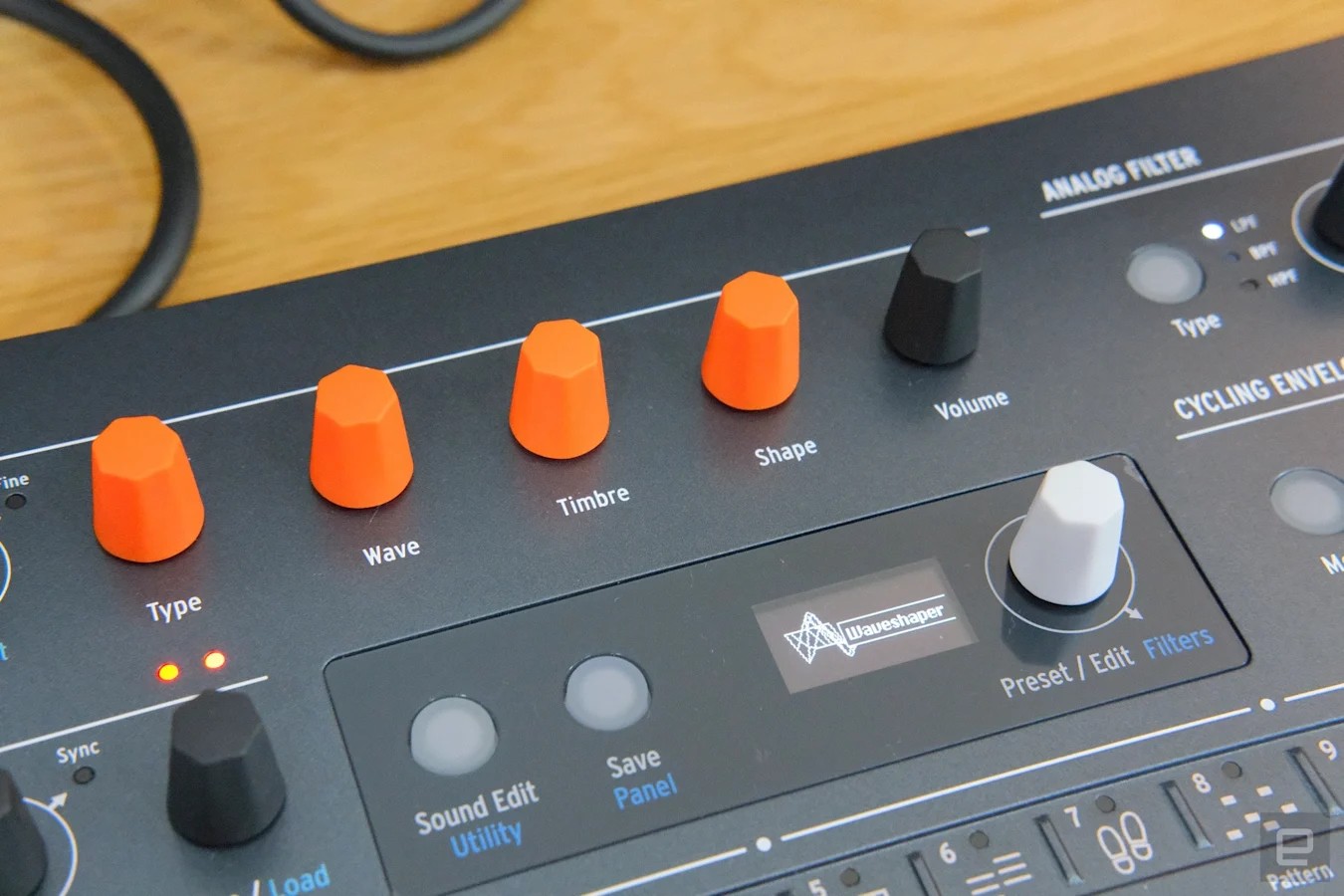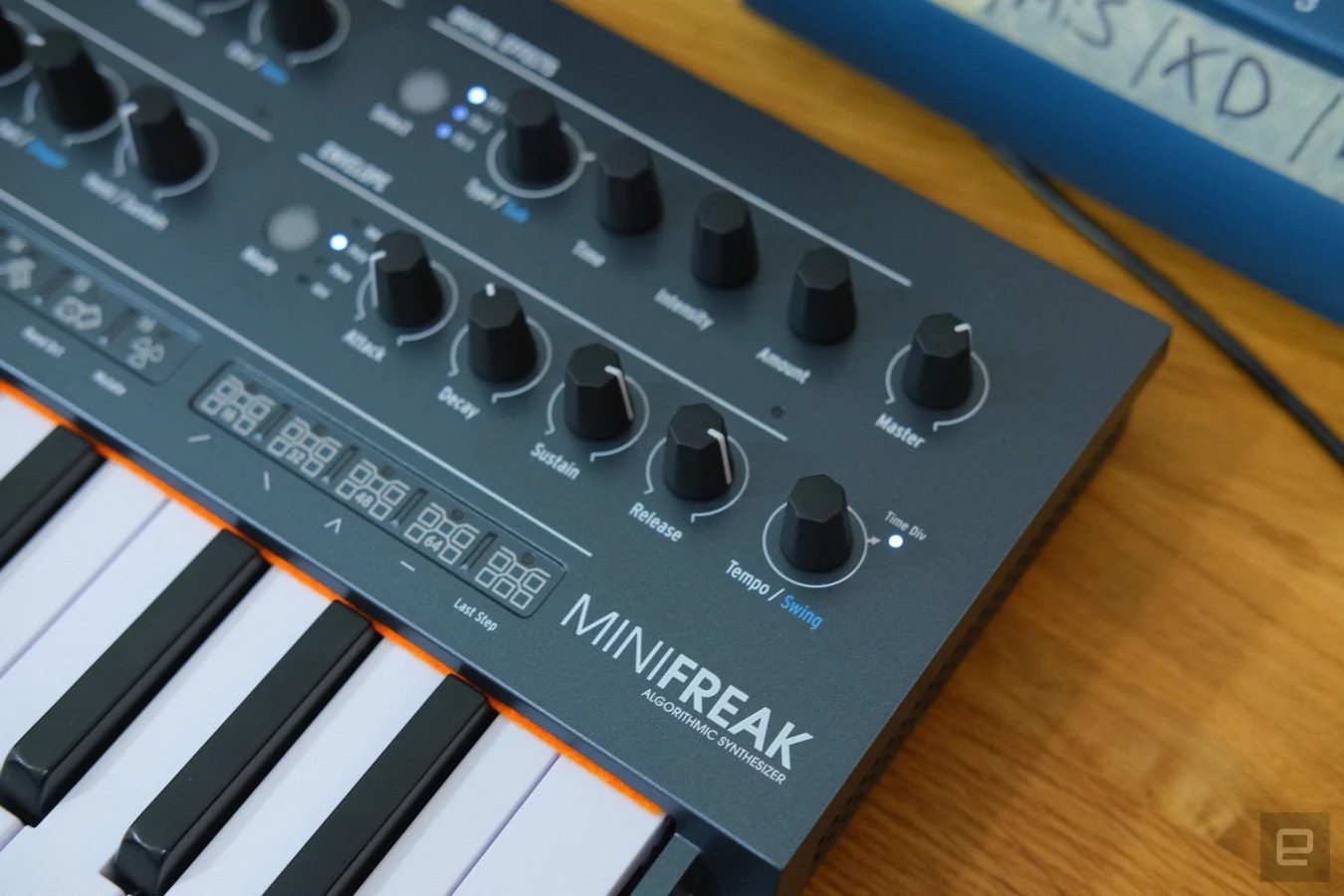Arturia’s MiniFreak is a weird-but-powerful digital synth at a great price
When people ask what their should be, I often recommend Arturia’s . Unless you absolutely have your heart set on an analog instrument, I think it offers the most versatility and the best bang for your buck. It has over a dozen different synth engines, an analog multimode filter, a mod matrix for putting together complex patches, plus it’s with new features. Sure, it needs the assistance of external effects to really and its touchplate keyboard is a bit controversial, but there’s no denying it offers a lot for just $349.
The little digital weirdo has proven so successful that Arturia decided to make an even more powerful synth, built on the same core. The MiniFreak has double the oscillators, six voices instead of four, built-in effects and a more traditional keyboard. It’s a robust midrange offering with a reasonably low $599 price. That puts it right up against other offerings like the ($599) and the Korg Minilogue ($530). But, as is usually the case with music gear, there’s no one right choice here. So let’s explore who might want the MiniFreak and why.
If you’re at all familiar with the MicroFreak, then you already have a pretty good idea of what to expect here – just bigger and more complex. The oscillators on the MiniFreak are the same, just now there are two per voice so your pads can be a little thicker. And you can add some evolution by layering two different engines – say for some upfront punch, and a virtual analog voice that comes in after.
Just like its predecessor, the MiniFreak is a digital / analog hybrid synth that combines digital oscillators with an analog filter and digital effects. As solid as the virtual analog engine and analog filters are though, it’s not going to fool well trained ears. You can coax some decent warmth and instability out of it, but it’s decidedly digital. For some, that might be a deal breaker – those people are frankly wrong and missing out. But, if you’re 100-percent convinced only analog will do, feel free to bail out now.

Terrence O'Brien / Engadget
The multi-engine synth core of the MiniFreak is incredibly versatile, covering everything from basic FM, to Karplus-Strong string modeling, to vocal synthesis and rave-ready superwaves. There are a couple of notable omissions from the MicroFreak though, that will hopefully make their way over in a firmware update. As of now there is no vocoder or custom wavetables available on the MiniFreak.
That being said, it can process other instruments by connecting them to the audio in jack on the back and feeding that through the built in filter and effects. Plus there’s a wave folder and bitcrusher specifically built-in to the incoming audio “oscillator.” Oscillator two also has a handful of unique digital filters and effects that you can use to shape sounds from oscillator one, including Destroy, ring modulation, a comb filter and more. This makes the MiniFreak not just a versatile synth, but also a pretty solid effects processor. You could easily connect a Moog, a guitar, or even a microphone and create entirely new textures that weren’t possible before. You can go completely overboard too, using the bit crusher on the incoming audio, then use the destroy module to bit crush your signal further, then filling up all three effects slots with more bit crushers!

Terrence O'Brien / Engadget
The digital engine does have its strengths and weaknesses. It can handle bass and leads just fine, but it really shines on keys, plucks and weirdo sound effects. The MicroFreak was a passable pad machine, but it always sounded a bit thin. By adding a second oscillator, the MiniFreak is able to beef those up and pads become one of its strong suits. It can get a little muddy at lower frequencies, but in general it sounds great, especially if your tastes err towards cold and gritty textures.
The new digital effects section really helps complete the package. Whereas the MicroFreak often sounded a little lonely without some external effects, its big sibling is able to create thick epic atmospheres right out of the box. There are three independent effect slots, with 10 effects to choose from including multiple reverb types, several distortion styles, chorus and compression.
In general Arturia plays things pretty conservative here, sticking to bread and butter effects. You won’t find crazy pitch shifting delays or super sparkly reverb. But that’s ok. My one wish is that there was some sort of equivalent to the lo-fi effect found on the Hydrasynth. You can create something similar by patching up a random LFO to the chorus and or pitch, and messing with the EQ, but having it as an easy-to-use one stop effect would be great.

